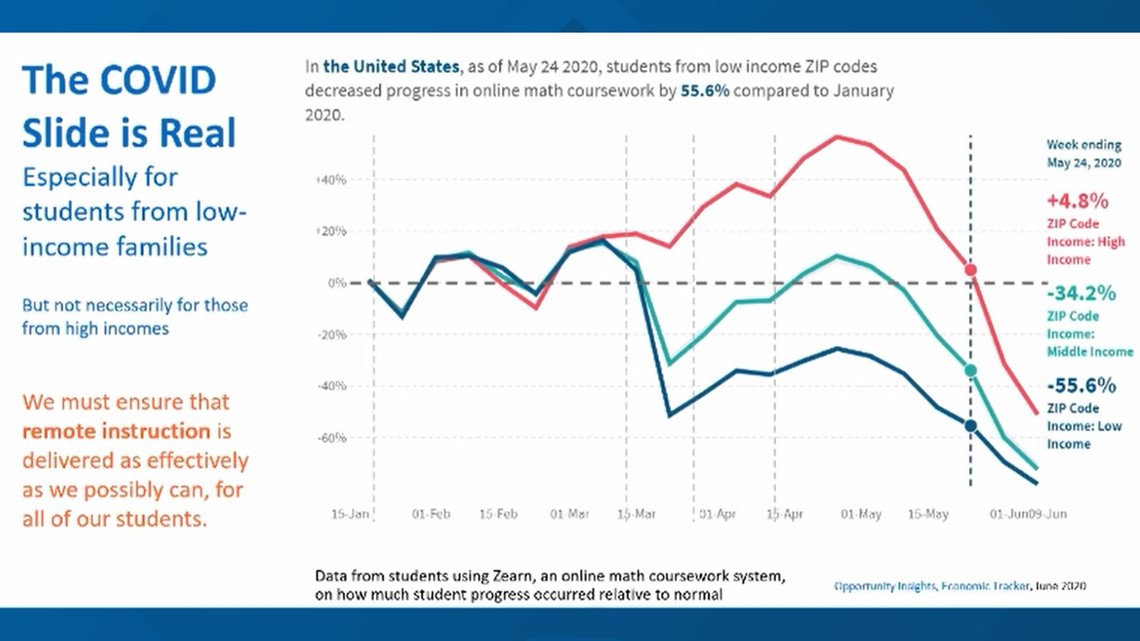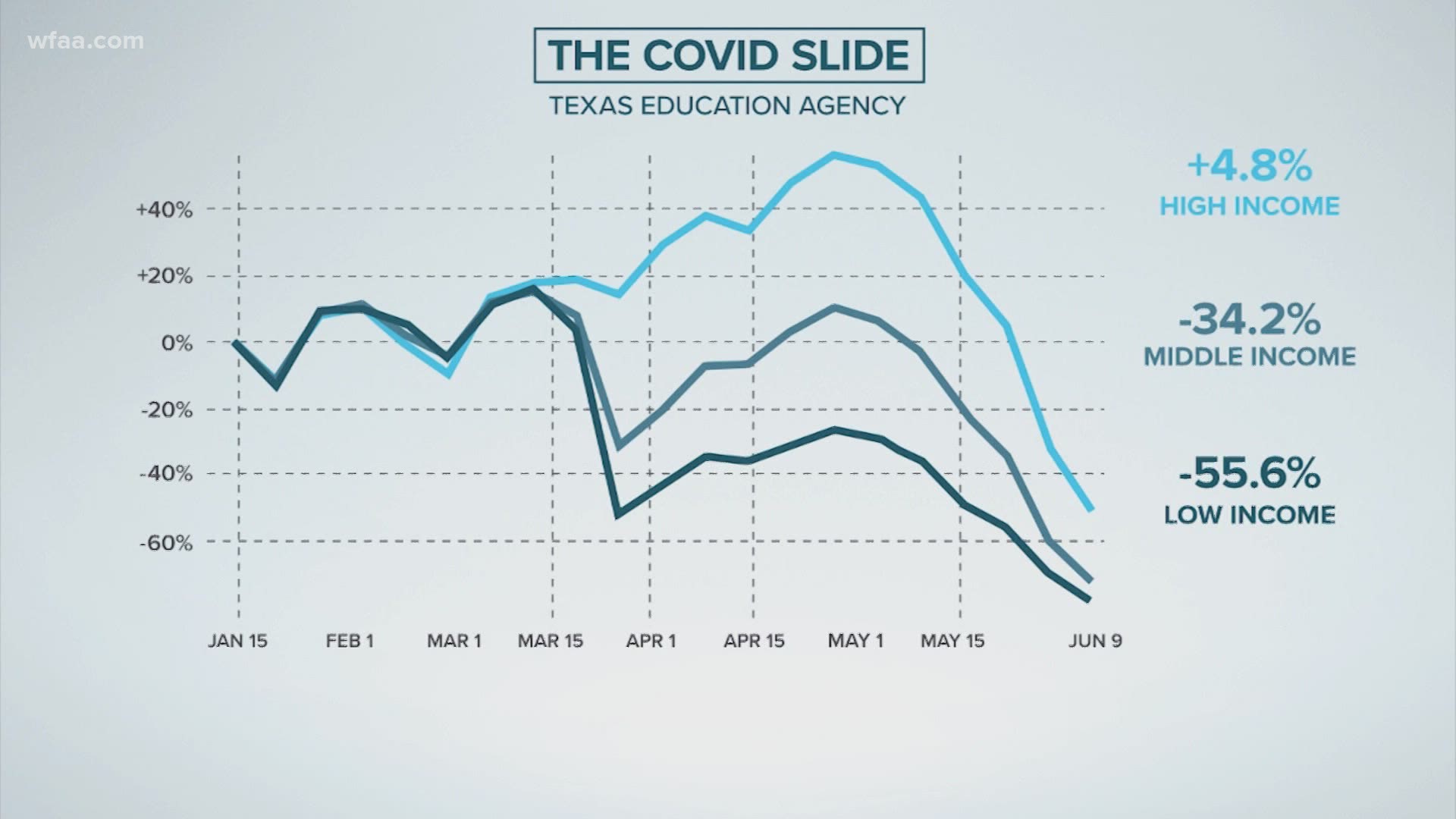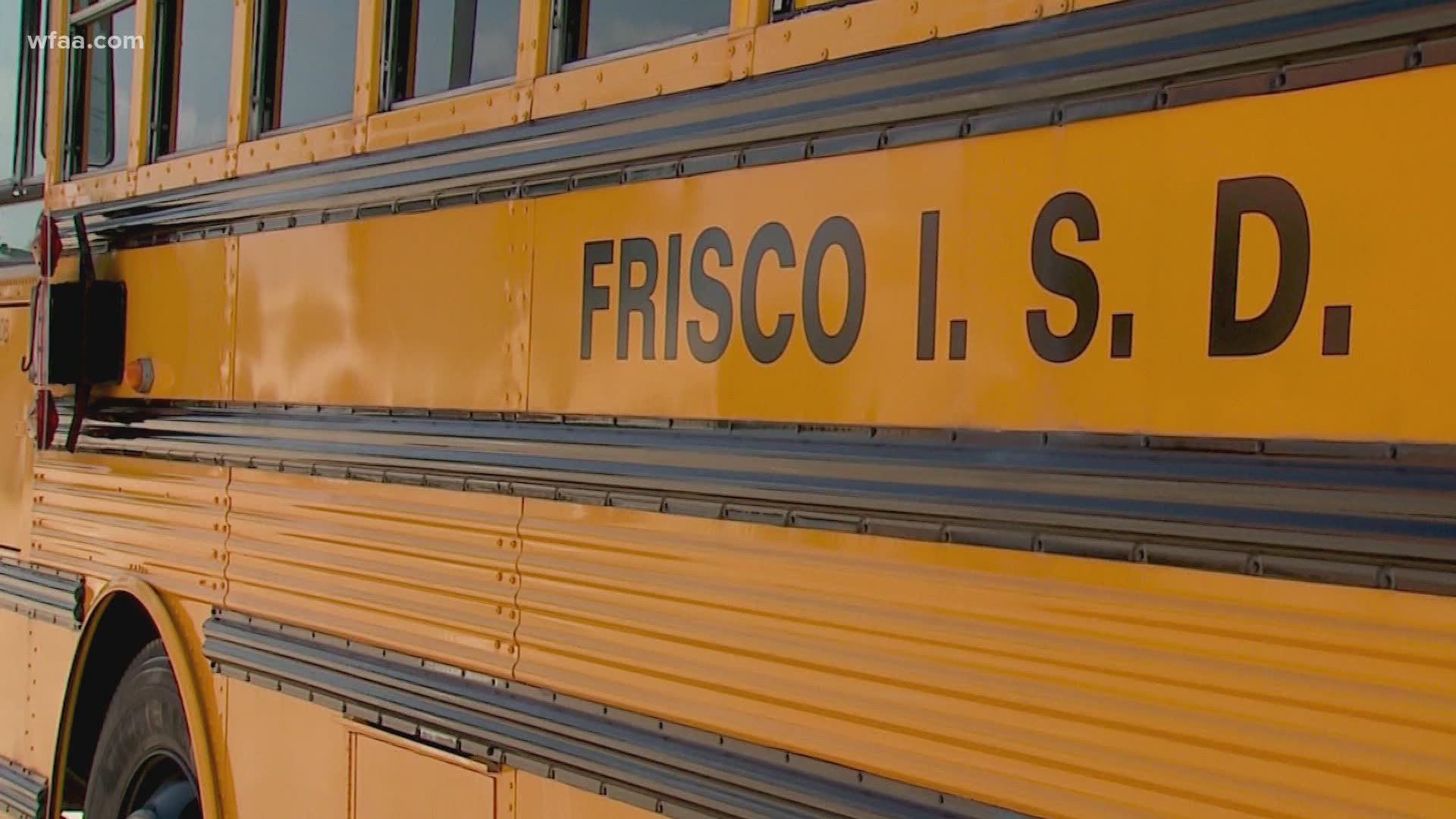DALLAS — As districts around North Texas plan for schools to reopen in August, parents will have to decide whether to send their child back to campus or try to make at-home learning work.
And the answers from parents right now vary widely as cases and hospitalizations from the novel coronavirus continue to increase in Texas.
Parents -- and the Texas Education Agency -- are worried about the "COVID slide," referring to the changes in student progress.
WFAA spoke with three parents via video conference call on Tuesday who have students in Coppell, Mesquite and Whitney ISD.
Sandra El Guizawi of Coppell says she worries about her soon to be first-grade daughter not receiving the social and emotional learning that takes place in the classroom.
“It’s a mixed world for us right now,” El Guizawi said. “As a working parent juggling between work and her assignments was not good.”


Terry Clay says his son will pursue a virtual model in Mesquite ISD with the hopes to supplement home-schooling for advanced courses that will not be offered online by the district. But said he won’t pursue classes on campus.
“That option is long out the window for us,” Clay said.
Robin Vaughn of Whitney says she already noticed an impact of distance learning on her kindergarten student after schools closed statewide in mid March.
“Trying to do this distance learning, I’ve definitely seen the regression,” Vaughn said.
Data backs her up.
On Tuesday, the Texas Education Agency in Austin met virtually to discuss what’s called the “COVID-slide.”
Its effects are depicted in a line graph broken down by household income. The lines start to separate when schools closed in March. From there, lower and middle-income students progress slid anywhere from 34 to 55% while higher-income households actually improved by approximately 4% over the same time period.
The “COVID-slide” is based on national math data but TEA Commissioner Mike Morath believes it tracks for Texas too.
Clay agrees.
“I think the regression is a real thing for my 8th grader going into high school next year,” Clay said.
Each of these parents say their local districts are keeping them updated on in-person and virtual learning options as well as safety protocols if they decide to send their children to campus.
On Monday, Frisco ISD sent a letter to parents asking them to commit to either an in-person or virtual academy model by July 10.
“Frisco ISD has taken the guidance we have received from the state and worked to develop processes and guidelines where none have been given,” the letter reads.
Lauren Sevak has six kids in FISD and said Tuesday she doesn’t feel she will know the right decision in the next ten days.
“I have a pre-existing medical condition,” Sevak said. “Given the choice of either going back as normal or virtual learning puts a lot of people in a precarious situation.”
The letter adds that parents will have the flexibility to change learning models, even after the school year begins.
For the parents from Coppell, Whitney and Mesquite ISD, they each said, at least at the end of June, their decision would be to keep their students out of the brick and mortar school building.



